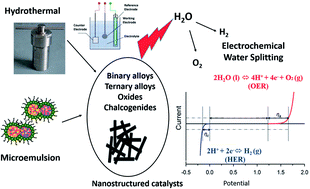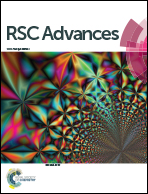Design of diverse nanostructures by hydrothermal and microemulsion routes for electrochemical water splitting
Abstract
Hydrothermal and microemulsion methods are low temperature methods used to obtain nanostructures of definite morphologies, sizes, facet termination and other structural features which result in the corresponding unique response to chemical, electrochemical or photochemical stimuli. An efficient catalyst to electrochemically split water to produce hydrogen and oxygen is of scientific, economic and societal relevance, especially due to the abundance of the starting material, water, and due to the product hydrogen, which is an ideal fuel, due to its highest mass density and clean combustion in air. In this review we focus on the hydrogen evolution reaction, HER, and the oxygen evolution reaction, OER, activity of the electrocatalysts produced by hydrothermal or microemulsion methods. The variation in electrochemical response resulting from the unique shape, composition and nano-architecture is discussed. Broadly, the catalysts were categorized as binary and ternary metal alloys as well as metal chalcogenides and oxides. This compilation would aid in the design of more effective water splitting electrocatalysts as well as in the selection of appropriate candidates for advanced mechanistic studies.

- This article is part of the themed collection: Chemical Frontiers Goa


 Please wait while we load your content...
Please wait while we load your content...